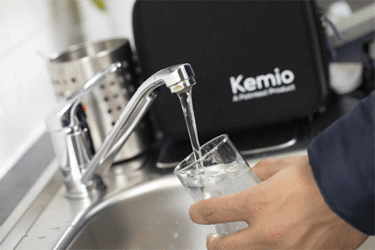Why Does Copper Contamination Cause A Risk To Community Health? And How Can It Be Tackled?

Copper is essential in small amounts for the body, but excessive consumption can lead to harmful effects. For those with Wilson's Disease, excess copper in drinking water poses a heightened health risk. Copper can enter drinking water through corrosion in plumbing systems, especially when pipes, valves, and fittings are made of copper. Acidic water can leach copper, causing blue/green staining and a metallic taste.
The United States Environmental Protection Agency's Lead and Copper Rule regulates copper levels in drinking water, requiring action if levels exceed 1.3 ppm in over 10% of consumer taps. Palintest's single-use copper sensor in the Kemio™ product range enables on-site testing at taps, helping authorities quickly identify corroded copper pipes and comply with regulations. The sensor, compatible with Kemio™ solutions, provides accurate results within minutes without specialized training.
Get unlimited access to:
Enter your credentials below to log in. Not yet a member of Water Online? Subscribe today.
